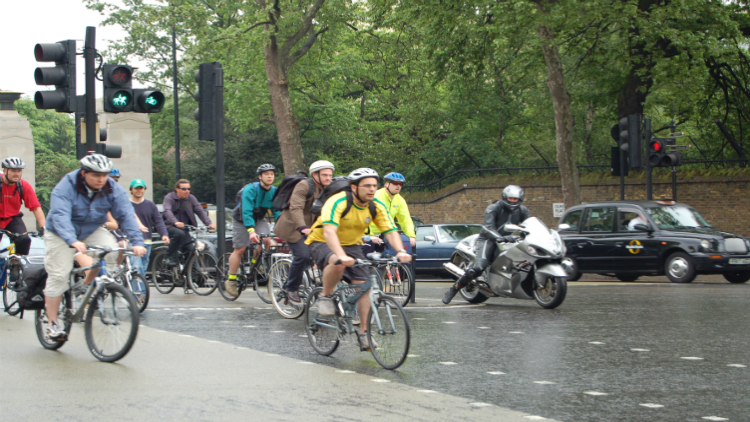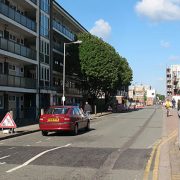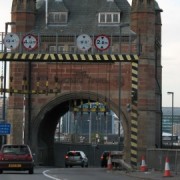“Watch where you’re going you f***ing c**t!”
As I heard the expletives exploding from my mouth and caught sight of mothers covering their children’s ears, I was horrified by the realisation I had contracted that most awful of transport disorders: road rage.
It was my first day on a bike in London and it had taken just 10 minutes for me to turn into an aggressive and angry cyclist. And the worst of it was – it was my fault; I had failed to spot a red light and almost hit a pedestrian. He shouted at me, but I shouted even louder.
In the space of just a few seconds I had gone from ecstatic enjoyment at having finally plucked up enough courage to cycle, to complete terror and embarrassment.
However, perhaps this shouldn’t have come as a surprise considering that female cyclists are almost twice as likely as their male counterparts to be subjected to harassment or bad driving.
According to Dr Rachel Aldred, senior lecturer in transport at the University of Westminster, these encounters can have such a damaging psychological effect that some people never get back in the saddle.
In a study of the dangers facing cyclists, entitled The Near Miss Project, Dr Aldred writes: “Near misses can have immediate emotional impacts but in more serious cases can even stop people cycling.”
This finding is extremely worrying considering the Mayor’s Vision for Cycling, which commits Londoners to spending £145m on cycling improvements in 2015, or roughly £18 a head.
While the ambitious plan seems to be gaining some positive results, with TfL reporting 10 per cent more cyclists on the road than in 2014, there is a corresponding increase in incidents of road rage – some so serious that they attract considerable media attention.
There has been considerable drive within some London boroughs to improve relations on the road. Last year Hackney launched its “Watch Out for Me!” campaign, which urged cyclists and motorists to keep an eye out for each other on the roads. The campaign included measures such as courses for HGV drivers that allowed them to experience being a cyclist.
Speaking to ELL last year, Councillor Feryal Demirci, Cabinet Member for Neighbourhoods spoke of the councils commitment to “encourage drivers and riders to share the road space.”
While the most up to date statistics from TfL show a 32% decrease in serious casualties in Hackney in 2014 compared to the previous year, pointing to a significant improvement in road safety for cyclists, relations between cyclists and motorists on the road lack similar improvement.
A lack of consideration from both road users makes London’s roads a tense environment. These ‘near misses’, as Aldred’s study calls them, continue to have a damaging effect on cyclist’s experience of the road. While in more severe cases cyclists were so frightened that they gave up cycling, a more common reaction was to become “even more vigilant, cautious or alert.”
While caution should be exercised on the roads, encouraged by negative relations, this caution can contribute to a sense of entrapment and according Dr Paul McLaren, a consultant psychiatrist at the Priory Hospital in Kent: “These emotional responses trap us in the moment and reduce our capacity to anticipate.
“The safest state to be in when you are cycling or driving is one which facilitates anticipation and vigilance.”
The safety of the roads then, is put into question with the proliferation of road incidents, highlighting an on-going feud between cyclists and motorists. Last month, a cyclist smashed the window of a car in Croydon, shattering glass over a sleeping baby. Earlier this month, a mother in Kingston Upon Thames was reported to have “mowed down” a cyclist with her Audi 4×4 while her children were in the back. The suspicion is that many similar incidents go unreported.
So, why can’t two wheels and four wheels get along? According to Dr McLaren the answer lies in feelings of vulnerability and power.
“Driving is governed by rules including mutual respect and consideration,” he says. “If we perceive rules have been broken in a way that impacts negatively on us, we can interpret that as a deliberate injury or attack – and the anger response system gets activated.”
In the case of a cyclist, this results in feeling vulnerable; while the safety a car affords a driver, gives them a sense of power.
“Being in a car may make us feel inherently stronger and tip the balance of our response system away from fear and towards anger,” he argues. “What happens next will depend on you – your genetic make-up, your personal experience of anger and how to manage it, and your mental state at the time.”
Twenty-one year old Isaac Mundy says he has experienced just such feelings of vulnerability – and lashed out accordingly. He has been cycling for more than 15 years, so when it comes to holding his own on the road, he’s something of an expert. Isaac, from Walthamstow, is typical of experienced riders who feel more needs to be done to protect them – while also admitting that he, too, has directed inappropriate anger towards motorists.
“When I was younger I would slap the side of cars out of frustration,” he says. “But I’m now more conscious of how poorly such behaviour reflects on cyclists.”
A 2014 TfL annual report found that most cyclists had demonstrated “inadvisable or unlawful behaviour” at some point. It also found that half of all cyclists had cycled on pavements, cycled without a helmet or cycled without high visibility clothing after dark.
Clearly, this rankles with motorists, but perhaps it shouldn’t, as research conducted by the University of Colorado in 2014 found that motorists were just as likely to flout the law as cyclists. However, it also found that errant cyclists were more visible, for example when ignoring a red light. While this might make motorists angry, their response leads to cyclists feeling vulnerable – just as Dr McLaren predicted it would.
This futile balancing act of power and vulnerability being played out by cyclists and motorists, makes for a treacherous environment for both road users.
So, it would appear that neither cyclists or motorists are perfect – something they might remember before activating their anger-response system too readily. Because, two wheels or four, does it really matter?





